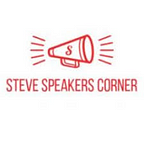Praying in the streets
At midnight on Thursday, 15th September 2011, a ban on praying on the streets of Paris was introduced by Nicolas Sarkozy’s Interior Minister, Claude Gueant.
France at the time was already home to the biggest Muslim population in Western Europe, standing at six million, just under 10% of the French population, many originating from France’s former North African colonies. Leading up to the ban, 1,000 people were regularly praying in the streets of the capital’s Goutte d’Or district, just to the east of the popular tourist area of Montmartre.
In November 2017, six years after the original ban, the matter again came into the public limelight as large scale street prayers this time kicked off in the Clichy-la-Garenne district of Paris. This district on the Seine in the north western suburbs, previously only known for being the home to L’Oreal, was thrust in to the media’s attention as protests by locals and politicians resulted in skirmishes with the praying Muslims.
As of the last census in 2011, 2.7 million Muslims lived in the UK, representing 4.8% of the population. Since 2011, the UK Muslim population has increased significantly with estimates in November 2017 stating it had increased to 4.1 million (6.2% of the population) and predictions suggest that it will rise to 13 million by 2050 (17% of the population). This significant increase is due to both the UK being a major destination of economic migrants coming to Europe and higher fertility rates seen amongst the Muslim population currently within the UK compared to the non-Muslim population.
Even though the UK’s Muslim population is significantly smaller than France’s, the issue of praying in the streets has already arrived. One area where it has been a problem for some time is in the Brune Street council estate in Spitalfields, East London. Here, up to 300 individuals completely block the streets in and around the estate every Friday as they pray.
The phenomenon has now also started to spread to numerous other locations, where pathways and roads are brought to a standstill every Friday as increasing numbers stop and fall to the ground to undertake their Islamic prayer.
One area where the problem is becoming particularly high profile is in the heart of Soho, in London’s West End. Bizarrely, Soho is an area which for decades has been infamous for its wild and sleazy nature. During the 1970s and 1980s, it was home to the UK’s sex industry, with its streets full of peep shows, sex shops, clip joints and prostitute ‘walk-ups’.
Much of the area’s sex industry has now disappeared, though a handful of sex shops remain. The area has now become the country’s best known gay village, with numerous gay bars and clubs filling many of its streets.
Deep in the heart of Soho can be found Berwick Street. It is a vibrant street full of vinyl record shops, traditional London pubs, tailors and independent fashion boutiques. The world-famous Berwick Street Market was established in the 18th century and is still going strong today, offering fruit and vegetables, flowers and street food. Standing at number 10 Berwick Street, is the Soho Islamic Centre. For many years most passers by would have not even noticed it. How this has now changed. Now on Fridays, particularly as the local workers venture out to grab their lunch from the many food stalls in the market, rows upon rows of men line up outside the ‘mosque’ to undertake their prayer ritual.
The numbers have steadily been increasing, at times the full thoroughfare is completely blocked. With the market in situ, the thoroughfare is not wide, which is currently also exacerbated by building works on the western side of the street. Locals and traders have pleaded with the leaders of the Islamic Centre to stop their members lining up on the pavement and street but to absolutely no avail.
In this location, the increasing numbers that are praying in the street causes not only a health and safety issue as passage on this busy highway is blocked, it causes a major nuisance and disruption to those who are both visiting and working in the area.
The practice is somewhat perplexing. Capacity of mosques to cater for the expanding Muslim population is often given as an explanation. However, according to muslimsinbritain.org there are ten mosques within less than one mile of Berwick Street. It is therefore hard to see that this is a capacity issue here.
The requirements for Islamic prayer (or Salat) are well known:
- wash your hands, mouth, nose, face, arms and feet three times and your head and ears one time with water;
- cover your body from the navel to the knee;
- remove your shoes unless they are completely clean;
- make sure the place of prayer is clean;
- ensure no one is talking as this will prevent you from listening to the sermon
Clearly none of these conditions are possible or practiced in the prayer that is undertaken out on the street in the middle of Soho.
Is it therefore not reality, that whether on the gay streets of Soho, in the housing estates of Spitalfields, across districts of Paris or anywhere else in Europe, the ever increasing practice of Muslim prayer closing down the thoroughfare is not done through necessity? Is it not actually more about a pure show of presence, one of power and control over the home nation? Just like the increasing use of the loud call to prayer, and the attempts to take over and control Speakers Corner in Hyde Park, London, this is about saying we are here, we are in your face and we will do what we like! Your rules, regulations and customs will not be applied to us.
